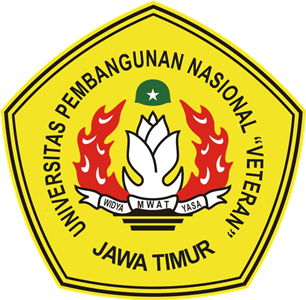CULTURAL TACTICAL URBANISM FOR KIDS IN TERANG BANGSA SCHOOL AREA, SEMARANG CITY
DOI:
https://doi.org/10.33005/border.v6i1.751Keywords:
tactical urbanism, cultural, roads, schoolAbstract
Children are an age group that is vulnerable to becoming victims of accidents on city roads, especially with the use of roads as play spaces. Apart from that, at Terang Bangsa Elementary School, there are still outdoor spaces that are unkempt and abandoned. Previous research shows a close relationship between Tactical Urbanism and children's behavior in urban spaces. However, there has yet to be any research regarding Tactical Urbanism that formulates a design specifically intended for children. Therefore, this research aims to formulate a Tactical Urbanism design appropriate to the culture of Terang Bangsa Elementary School children. Qualitative methods were used to answer the research objectives: observation, literature review, and descriptive qualitative. Based on this method, the appropriate Tactical Urbanism design is to provide a playground that facilitates accustomed games. Tactical Urbanism suggests dividing areas into three: circulation, active, and semi-active. Each zone is equipped with furniture that can be disassembled and adapted to suit the child, and it functions as a play stimulant, relaxer, and barrier. Practical street art is needed to support children's play atmosphere. Implementing this design can change the school environment, motivate school children's activities, and become the school's identity.
Downloads
References
Achlis, D. and Kharismawan, R. (2022) ‘Ruang Bermain Anak dalam Kegiatan Komersial sebagai Wujud Kota Ramah Anak di Surabaya’, Jurnal Sains dan Seni ITS, 11(4), pp. 2337–3520. Available at:https://doi.org/10.12962/j23373520.v11i4.96212.
Alisdairi, L.K. (2014) A Cry and a Demand: Tactical Urbanism and the Right to the City. Thesis. University of Washington.
Alyani, S.A.S. and Herlily (2021) ‘Interrogating Sense of Place Through Tactical Urbanism of Women and Children in Kampung Kerapu, North Jakarta’, Advances in Economics, Business and Management Research, 168, pp. 296–301. Available at: https://doi.org/10.2991/aebmr.k.210305.054.
Arsita, P. D., & Jordan, N. A. (2022). Analisis Kesesuaian Jalur Pejalan Kaki Dengan Pendekatan Konsep Active Living Street. Border: Jurnal Arsitektur, 4(1). Available at: https://doi.org/ 10.33005/border.v4i1.9.
Berglund, L. (2020) ‘Excluded by design: informality versus tactical urbanism in the redevelopment of Detroit neighborhoods’, in The Aesthetics of Neighborhood Change. Routledge, pp. 28–65.
De Nicola, A., Magri, P., & Zuccoli, F. (2019). Fà la cosa giusta! Exhibition: an opportunity to create synergies between schools, museums and our heritage. In Reconstruction, recovery and resilience of historic cities and societies (pp. 21-22). Università degli Studi L'Aquila.
Dewi, A.P., Hodijah, O. and Delisma, O. (2023) ‘Pemanfaatan Permainan Tradisional di Tengah Maraknya Gadget Pada Anak Usia Sekolah Dasar (Studi Kasus terhadap Siswa di SDN 231 Suka Asih Mandalajati Bandung)’, Midang, 1(2), pp. 75–81. Available at: https://doi.org/10.24198/midang.v1i2.47025.
Direktur Jenderal Perhubungan Darat (2018) Peraturan Direktur Jenderal Perhubungan Darat Nomor 3582/AJ.403/DRJD/2018 Tentang Pedoman Teknis Pemberian Prioritas Keselamatan dan Kenyamanan Pejalan Kaki Pada Kawasan Sekolah Melalui Penyediaan Zona Selamat Sekolah.
Fontes, A.S. (2021) ‘We protect schools: tactical urbanism actions in the school surroundings of Barcelona, Spain’, Journal of Environmental Management & Sustainability, 10(1), pp. 1–21. Available at: https://doi.org/10.5585/geas.v10i1.19164.
Han, H., Nguyen, T.V.T. and Sahito, N. (2019) ‘Sidewalk Zoom-In: A Spatial–Temporal Negotiation and Self-Organization within a Sociable Space’, Sustainability, 11(22), p. 6241. Available at: https://doi.org/10.3390/su11226241.
Kabir, M., Dhruba, Q. F. F., Mahmud, H., Hasan, M. K., & Zaman, A. R. (2020). Gaming Insight: Conversion of Popular Sedentary Games into Motion-Based Form. International Journal of Human–Computer Interaction, 36(13), 1205-1215.
Lydon, M., Bartman, D., Garcia, T., Preston, R., & Woudstra, R. (2012). Tactical Urbanism 2. NextGen.
Lydon, Mike & Garcia, Anthony. (2015). Tactical urbanism: Short-term action for long-term change. 10.5822/978-1-61091-567-0.
Manurung, P. (2017) ‘Kepadatan Permukiman dan Ketersediaan Ruang Bermain Anak’, Jurnal Koridor, 8(2), pp. 149–153. Available at: https://doi.org/10.32734/koridor.v8i2.1342.
Menteri Pekerjaan Umum dan Perumahan Rakyat Republik Indonesia (2018) Peraturan Menteri Pekerjaan Umum dan Perumahan Rakyat Nomor 05/PRT/M/2018 Tentang Penetapan Kelas Jalan Berdasarkan Fungsi dan Intensitas Lalu Lintas Serta Daya Dukung Menerima Muatan Sumbu Terberat dan Dimensi Kendaraan Bermotor.
Mohankumar, V. et al. (2020) A Tactical Urbanism Guidebook. New Delhi: GIZ.
Natasya, D., Tjahjono, T. and Siregar, M.L. (2015) ‘Analisa Keselamatan Lalu Lintas Pada Siswa Sekolah Dasar (Studi Kasus: SDN Cisalak 01)’, The 18th FSTPT International Symposium, Unila, Bandar Lampung, August 28, 2015 [Preprint], (203).
Nurhakim, Sriastuti, D.A.N. and Ardantha, I.M. (2018) ‘Efektivitas Zona Selamat Sekolah dan Kinerja Ruas Jalan (Studi Kasus: ZoSS SD Negeri 4 Dalung)’, Paduraksa, 7(1), pp. 63–76.
Özbayraktar, M., Pekdemir, M. and Mırzaliyeva, G. (2017) ‘Spatial Character Analysis of Streets as Public Spaces: The Case of Izmit Hurriyet and Cumhuriyet Street, Turkey’, IOP Conference Series: Materials Science and Engineering, 245, p. 072019. Available at: https://doi.org/10.1088/1757-899X/245/7/072019.
Praja, A.L., Sholihah Nurfaidah, S. and Rahmiati, D. (2018) ‘Penggunaan Sarana Belajar Melalui Permainan Tradisional dalam Membangun Nilai-nilai Karakter Bangsa di Sekolah Dasar’, Jurnal Pengabdian Masyarakat Ilmu Keguruan dan Pendidikan, 1(2), pp.103-107. Available at: https://doi.org/10.31326/jmp-ikp.v1i02.185.
Rahmayani, R. et al. (2023) ‘Correlation between anthropometric measurements of height and arm span in Indonesian children aged 7-12 years: a cross-sectional study’, The Turkish Journal of Pediatrics, 65(1), pp. 13–23.
Roe, J. et al. (2019) ‘The Restorative Health Benefits of a Tactical Urban Intervention: An Urban Waterfront Study’, Frontiers in Built Environment, 5(71), pp. 1–10. Available at: https://doi.org/10.3389/fbuil.2019.00071.
Sahlberg, P., & Doyle, W. (2019). Let the children play: How more play will save our schools and help children thrive. Oxford University Press, USA.
Saputra, N.E. and Ekawati, Y.N. (2017) ‘Permainan Tradisional Sebagai Upaya Meningkatkan Kemampuan Dasar Anak’, Jurnal Psikologi Jambi, 2(2), pp. 48–54.
Senger, M., Giesch, M. and Fischer, W. (2021) ‘Temporary Street Transformation as an Intervention for More People Friendly Environments in Cities, a Contribution Within the Frame of Tactical Urbanism’, Acta Geobalcanica, 7(4), pp. 137–144. Available at: https://doi.org/10.18509/AGB217-40137s.
Silva, P. (2016) ‘Tactical urbanism: Towards an evolutionary cities’ approach?’, Environment and Planning B: Planning and Design, 43(6), pp. 1040–1051. Available at: https://doi.org/10.1177/0265813516657340.
Simanjuntak, J.O., Simanjuntak, N.I.M. and Turnip, S.P. (2023) ‘Evaluasi Zona Selamat Sekolah (ZoSS) di Kota Medan’, Jurnal Teknik Sipil, 2(2), pp.71-80.
Sugiyanto, G. et al. (2015) ‘Efektivitas Zona Selamat Sekolah (ZoSS) di Sekolah Dasar (Studi Kasus di Kabupaten Banyumas, Provinsi Jawa Tengah)’, Jurnal Ilmiah Semesta Teknika, 18(2), pp. 122–129.
Suweda, I.W. (2009) ‘Pentingnya Pengembangan Zona Selamat Sekolah Demi Keselamatan Bersama di Jalan Raya’, Jurnal Ilmiah Teknik Sipil, 13(1), pp. 1-12.
Utomo, H. P., & Armanto, F. (2021). Menggali Sustainable Mobility di Perguruan Tinggi Melalui Kajian Perilaku Parkir Sepeda Motor Mahasiswa. Border: Jurnal Arsitektur, 3(2), 115-122. Available at: https://doi.org/ 10.33005/border.v3i2.9.

















